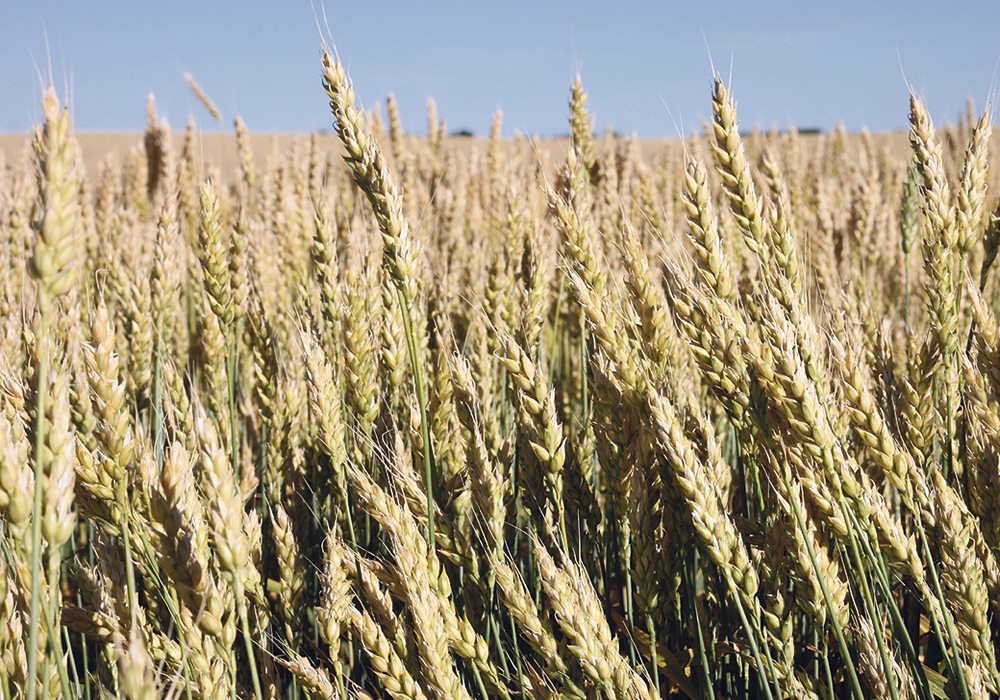WINNIPEG (CNS) — It’s too early to give up on this year’s winter wheat crop, despite the cold weather and scant snow cover.
Cereal crop experts say soil temperatures on the Prairies haven’t yet hit danger levels.
“I checked the soil temperatures (Feb. 13) across the Prairies and most of the soils are about -10 C and winter wheat at this stage can still handle that level of coldness … so I think in most areas, we are still OK,” said Ken Gross, a director with Winter Cereals Manitoba and an agrologist with Ducks Unlimited Canada.
Read Also

Europe holds promise for Canadian lentils
Pulse Canada is trying to help boost lentil consumption in Europe, which is already the fourth largest market.
Winter wheat can handle soil temperatures as cold as -16 C, he added.
Temperatures throughout the winter in Western Canada have dipped to between -30 C and -40 C numerous times, with most of the Prairies south of the Trans-Canada Highway having little or no snow cover.
“There’s a general lack of snow cover across the southern Prairies. So, it sure would be nice to alleviate our concerns if we got a little bit of snow and hopefully warm up a little bit here too,” Gross said.
The Canada Drought Monitor map from Agriculture Canada as of Jan. 31 shows a dismal picture. Severe drought conditions exist in a pocket of southern Alberta and throughout south-central Saskatchewan, while the situation is dire around Regina and Weyburn, where there are extreme drought conditions. The news is better in Manitoba where only moderate drought conditions exist in the southwestern area of the province.
Some parts of the Prairies have good snow cover, such as north of Winnipeg, where snow has blanketed fields for most of the winter.
“Up here in our area, we’ve had good snow cover for most of the year. So anyone who put winter wheat in I think is going to be OK so far,” said Doug Martin, interim executive director of Winter Cereals Manitoba, who farms near East Selkirk, Man.
As winter progresses, winter wheat’s vulnerability will gradually increase.
“March is more of a month that can do more damage on the winter wheat. So that’s where we’ve seen in past years more of the damage,” Martin said.
For the drier areas, if the winter continues without snow, producers should plan to apply nitrogen as soon as possible in the spring, said Gross.
“If the crop is coming out of the winter a little bit weak, it needs a little bit help … the fertility will help it grow quickly and move through that very successfully,” he said.
Lack of moisture isn’t affecting only Canadian winter wheat crops. The wheat outlook report released Feb. 12 by the United States Department of Agriculture said no significant precipitation has fallen in the last four months across the southern Plains, which has intensified drought conditions causing further deterioration of winter wheat.
According to Gross, the U.S. usually loses about 10 percent of its winter wheat crop due to winter-kill every year. The U.S. planted 32.6 million acres of winter wheat, according to the USDA Winter Wheat Seeding report released Jan. 12, which is down one percent from 2017.
In Canada, winter wheat acres are down as well. According to Statistics Canada, 335,000 acres of winter wheat were seeded in the fall in Western Canada, compared to 535,000 acres the previous year.
This isn’t surprising to Gross. Farmers told him they hadn’t seeded as much winter wheat due to the dry conditions that plagued the Prairies last summer.
“There was interest in seeding winter wheat last fall but it was just so dry it was hard. Guys were really reticent to get out there and seed into concrete,” he said.















